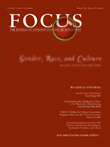With the recent explosion of information about the neurobiology of addictions, interest in pharmacotherapeutic interventions has dramatically increased. Although a number of studies have investigated treatments for cocaine, marijuana, opioid, and alcohol dependence, efficacy has been demonstrated only for pharmacotherapeutic treatments of opioid and alcohol dependence. However, there are promising pharmacological treatments on the horizon, including development of a cocaine vaccine (
61,
62) and agonists and antagonists of the cannabinoid receptor system (
63).
Opioid dependence
In recent years the number of persons addicted to illicit opioids has increased. At the same time, the complexity of their disorders has increased along with the purity of heroin and with medical problems associated with injection drug use, particularly HIV and hepatitis C infections (
64–
66). These trends make the need to optimize the treatment of opioid dependence more urgent.
Studies have repeatedly demonstrated the finding that 80–100 mg/day of methadone is more efficacious than the commonly prescribed lower doses (30–60 mg/day) in treating withdrawal symptoms (
67,
68), increasing retention in treatment, reducing needle sharing, and reducing morbidity and mortality rates (
69). In a 3-year study of 245 patients in methadone maintenance treatment, Maxwell and colleagues clearly demonstrated the safety of methadone dosing above 100 mg/day (
70).
Levomethadyl acetate, or levo-alpha acetyl methadol (LAAM), is an opioid agonist with a longer elimination half-life than methadone, permitting a more convenient in-clinic dosing schedule of three times a week. In 2001, the Food and Drug Administration (FDA) approved unsupervised, take-home use of LAAM, further increasing its convenience (
71,
72). However, an association of LAAM use with prolongation of the QT interval and cardiac arrhythmias led the FDA to issue a “black box” warning and a recommendation to obtain pretreatment and follow-up ECGs to ensure safety (
73).
Buprenorphine, a partial opioid mu-receptor agonist and weak kappa antagonist, offers greater safety than and equal efficacy to methadone and LAAM. Buprenorphine has a ceiling effect, whereby at high doses its clinical effect reaches a plateau and it begins to act more like an antagonist, which reduces the risk of overdose, respiratory depression, and diversion to other opioid users (
74). Optimal dosing is 8–12 mg/day. The sublingual formulation achieves nearly equal distribution as the parenteral formulation, and the inclusion of naloxone in both formulations blocks euphoria if the medication is injected, thus increasing its safety (
75).
Johnson and colleagues directly compared opioid agonist therapies and found the longest continuous abstinence with LAAM but superior retention in treatment with methadone (
72). This may be a result of LAAM’s longer dose induction period (
76) and the greater reinforcement with methadone, a full agonist, compared with buprenorphine (
69). Studies using opioid agonist therapy as “medical maintenance” in primary care settings show equivalent outcomes compared with treatment delivered in specialty clinics (
77–
79). The FDA recently approved buprenorphine sublingual tablets (with a schedule III designation) for routine medical maintenance treatment of opioid-dependent patients in office-based practice.
Alcohol dependence
Naltrexone, an opioid antagonist, was approved by the FDA in 1996 for the treatment of alcohol dependence. It is hypothesized that naltrexone blocks the rewarding effects of alcohol through its effect on endogenous opioid systems. Reviews of naltrexone studies (
80,
81) found a modest reduction in relapse rates and percent drinking days, a modest decline in relapse to alcohol dependence, and a decrease in alcohol craving. A recent VA multicenter trial of naltrexone for alcohol dependence produced null findings (
82). Further investigation is needed to better define which patients are most likely to benefit from treatment with naltrexone. Naltrexone compliance may be enhanced by combined use of a sustained-release formulation (
83) and behavioral incentives (
38).
Acamprosate (calcium acetylhomotaurinate) is a novel compound believed to exert its therapeutic effects through excitatory amino acid systems involved in alcohol withdrawal. Thus it may decrease the craving related to conditioned alcohol withdrawal. In a meta-analysis of 11 studies comparing acamprosate to placebo, acamprosate was found to be superior across several measures of alcohol consumption. However, evidence for prevention of relapse to heavy drinking remains sparse. In comparing meta-analytic findings for naltrexone compared with acamprosate, Krantzler tentatively concluded that both agents demonstrate modest efficacy in maintenance of abstinence (
81).
A number of other promising pharmacological treatments are available for alcohol use disorders. In a placebo-controlled study of the efficacy of ondansetron, a 5-HT
3 antagonist, Johnson and colleagues demonstrated that it decreased alcohol consumption more in persons who developed alcohol dependence at an early age compared with persons who developed dependence later in life (
84). In a placebo-controlled study of the efficacy of sertraline for treatment of alcohol dependence, Pettinati and colleagues found that it decreased alcohol consumption markedly more for persons without a history of depression compared with persons with lifetime depression (
85). These studies suggest that the serotonergic system is involved in the pathophysiology of alcohol dependence, and they support the hypothesis that there is a spectrum of biologically based subtypes of alcohol dependence, each of which may respond uniquely to specific pharmacological treatments.

